
Brought to you by:
Enterprise Strategy Group | Getting to the Bigger Truth™
ESG TECHNICAL VALIDATION
Keepit: Dedicated Data Protection For Saas Workloads
Delivering Data Availability, Cost-Efficiency, Simplicity, Instant Recovery, And Total Security
By Kerry Dolan, Sr. IT Validation Analyst
OCTOBER 2021
ESG Technical Validations
Introduction
Background
Figure 1. Top Causes of SaaS Data Loss
What is the top cause of data loss for the SaaS-based applications your organization uses? (Percent of respondents, N=344)
Source: Enterprise Strategy Group
Figure 2. Top 10 Drivers of Cloud-based Data Protection
Which of the following factors were–or are–the biggest drivers behind your organization’s consideration of cloud-based data protection services? (Percent of respondents, N=376, three responses accepted)
Source: Enterprise Strategy Group
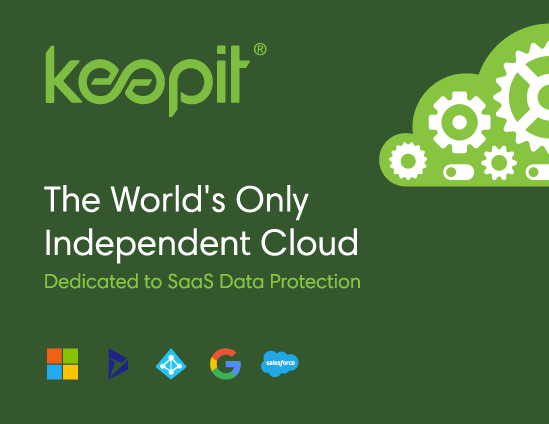
Keepit Dedicated SaaS Data Protection
Figure 3. Keepit Dedicated SaaS Backup
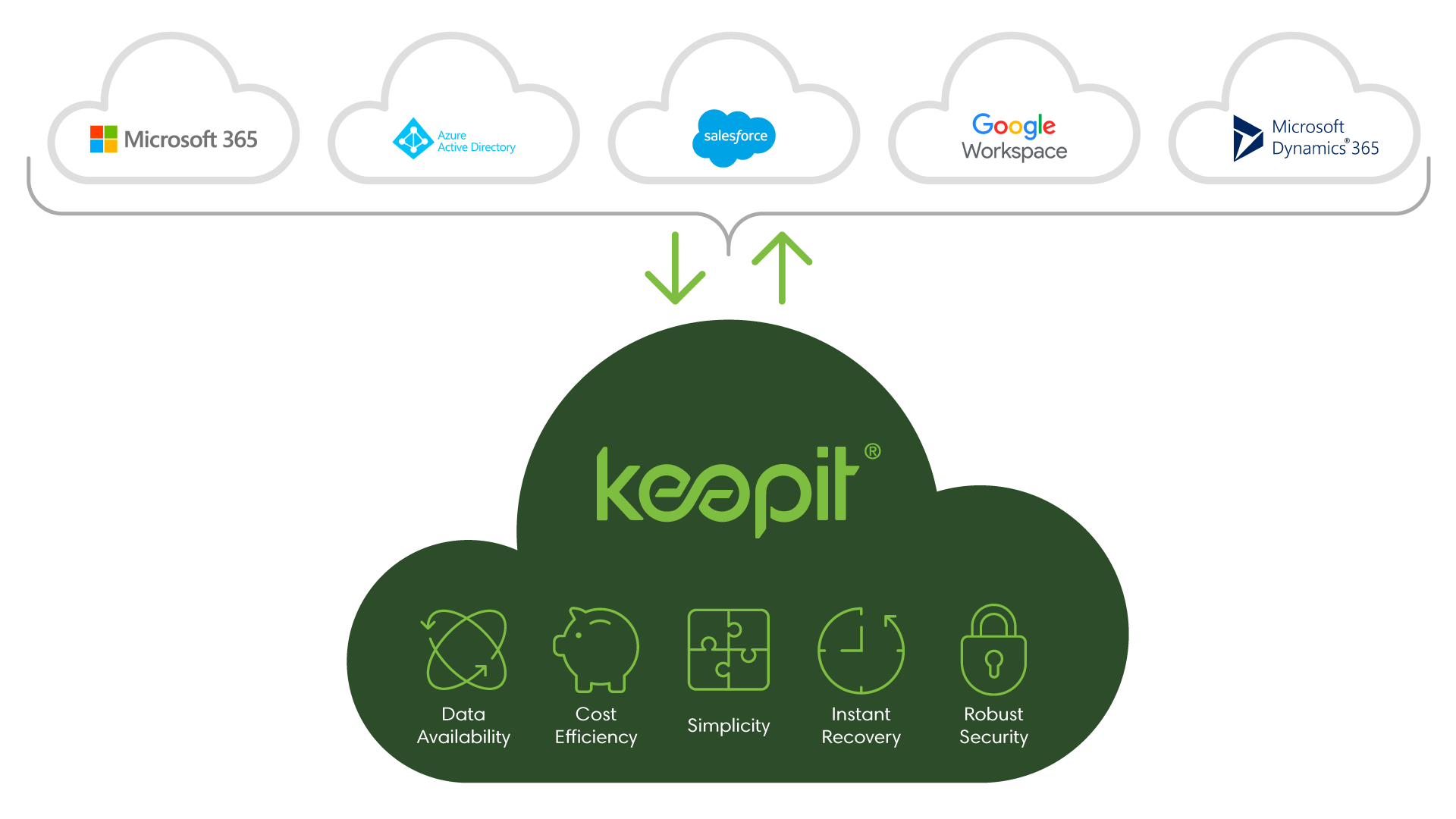
Source: Enterprise Strategy Group
Key features include:
ESG Technical Validation
Ease of Management
Initial Setup and First Backup
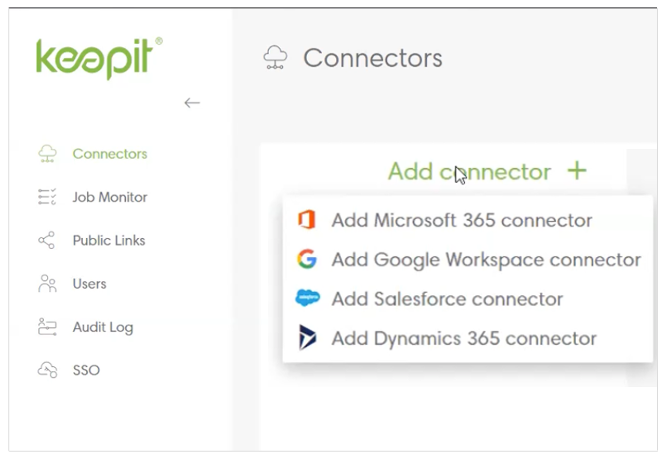
Figure 4. Configuring Microsoft Office 365 Backup
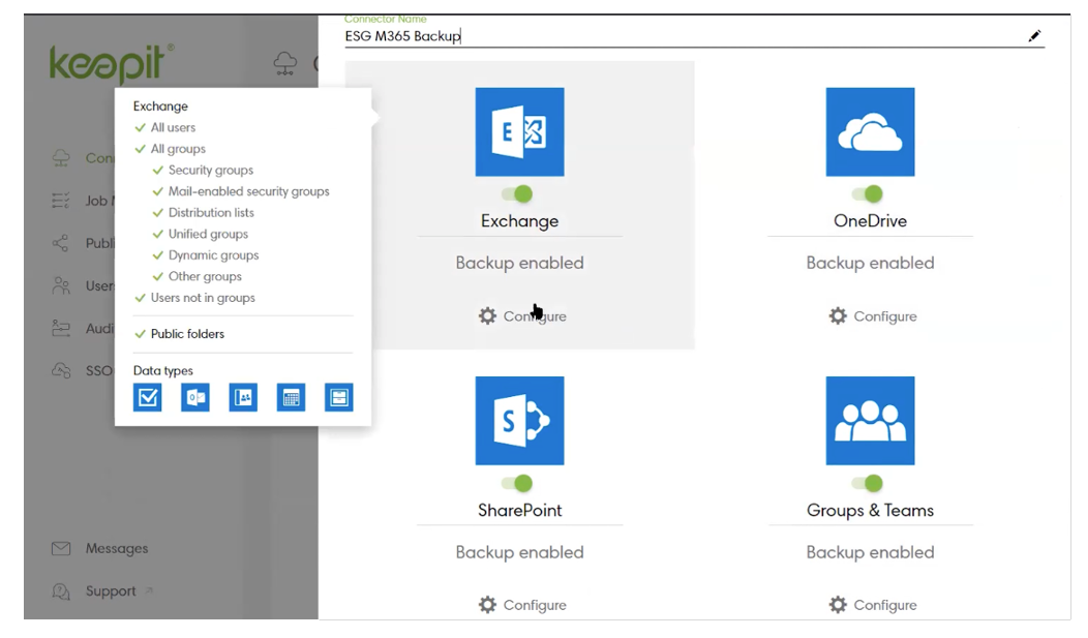
Source: Enterprise Strategy Group
Management features include:
Why This Matters
Data Search and Restore
Finding and Restoring Microsoft Office 365 and Salesforce Data
Figure 5. Keepit Dashboard
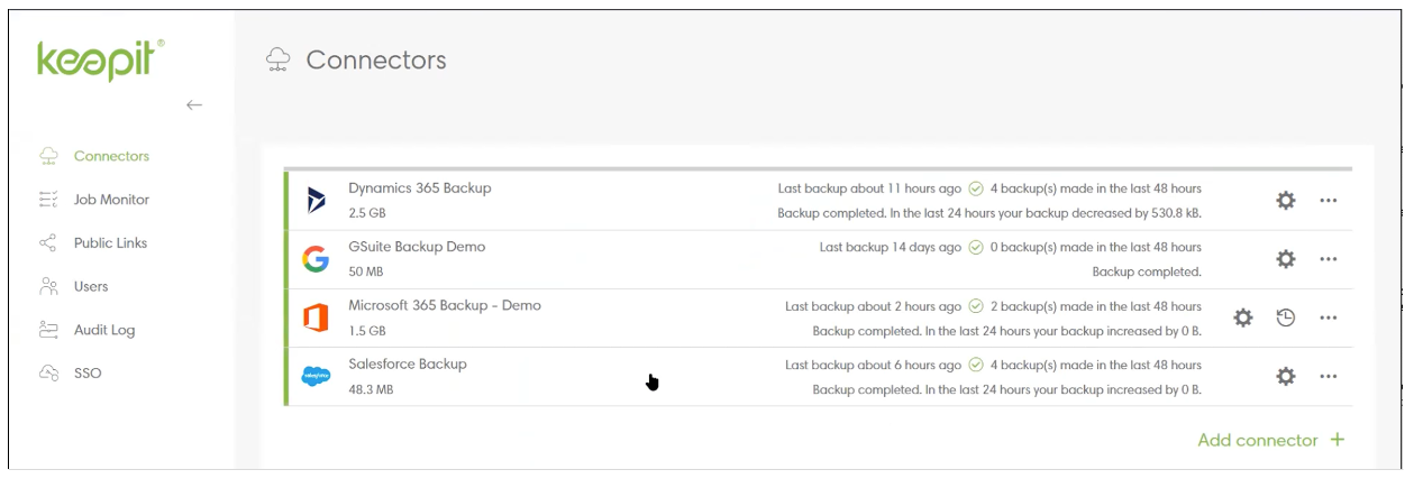
Source: Enterprise Strategy Group
Figure 6. Finding Emails in Microsoft Office 365 Backup
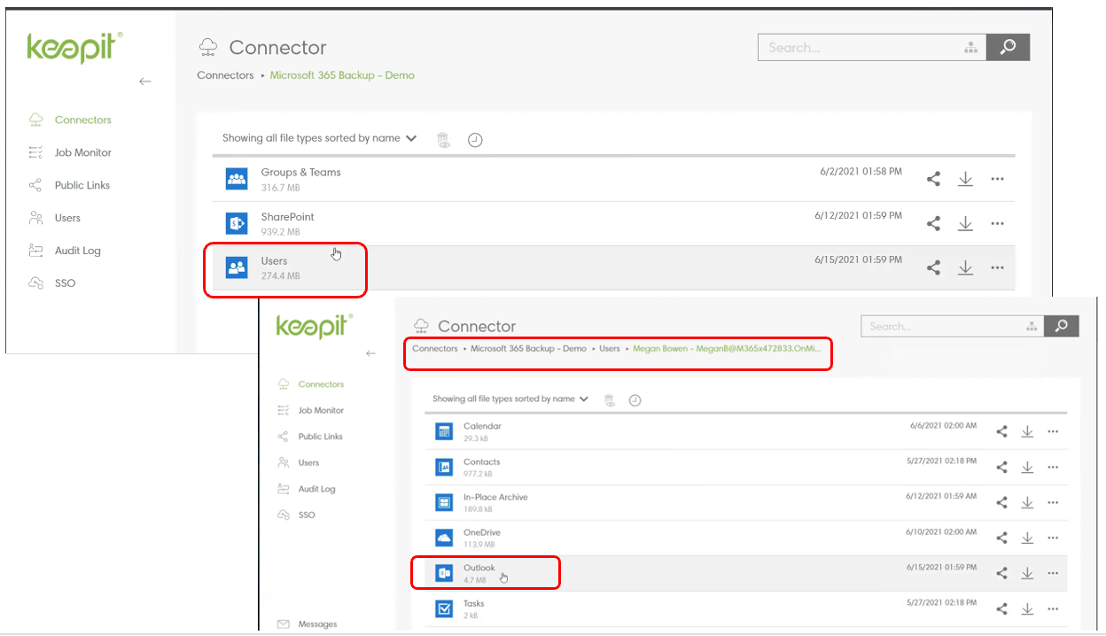
Source: Enterprise Strategy Group
Figure 7. Deleted Items View
Source: Enterprise Strategy Group
Figure 8. Select Item by Specific Snapshot
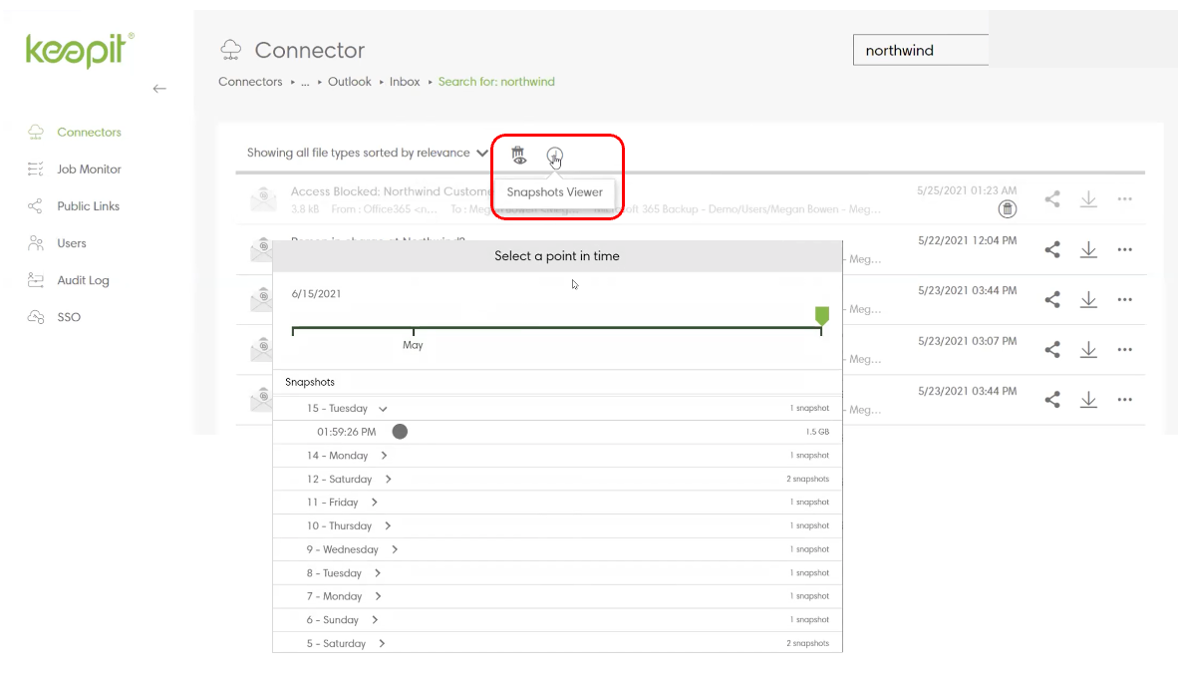
Source: Enterprise Strategy Group
Figure 9. Restore Options for Salesforce Data
Source: Enterprise Strategy Group
Why This Matters
The Bigger Truth
ESG validated the Keepit solution’s:
- Simplicity and speed of initial setup and backup.
- Simplicity and speed of finding and restoring data.
- Restore options that make data quickly accessible while retaining SaaS application context.
This ESG Technical Validation was commissioned by Keepit and is distributed under license from ESG.
1 Source: ESG Master Survey Results, 2021 Data Protection Cloud Strategies, May 2021. All ESG research references and charts in this technical validation have been taken from these master survey results.
All trademark names are property of their respective companies. Information contained in this publication has been obtained by sources The Enterprise Strategy Group (ESG) considers to be reliable but is not warranted by ESG. This publication may contain opinions of ESG, which are subject to change from time to time. This publication is copyrighted by The Enterprise Strategy Group, Inc. Any reproduction or redistribution of this publication, in whole or in part, whether in hard-copy format, electronically, or otherwise to persons not authorized to receive it, without the express consent of The Enterprise Strategy Group, Inc., is in violation of U.S. copyright law and will be subject to an action for civil damages and, if applicable, criminal prosecution. Should you have any questions, please contact ESG Client Relations at 508.482.0188.

Enterprise Strategy Group | Getting to the Bigger Truth™
Enterprise Strategy Group is an IT analyst, research, validation, and strategy firm that provides market intelligence and actionable insight to the global IT community.
